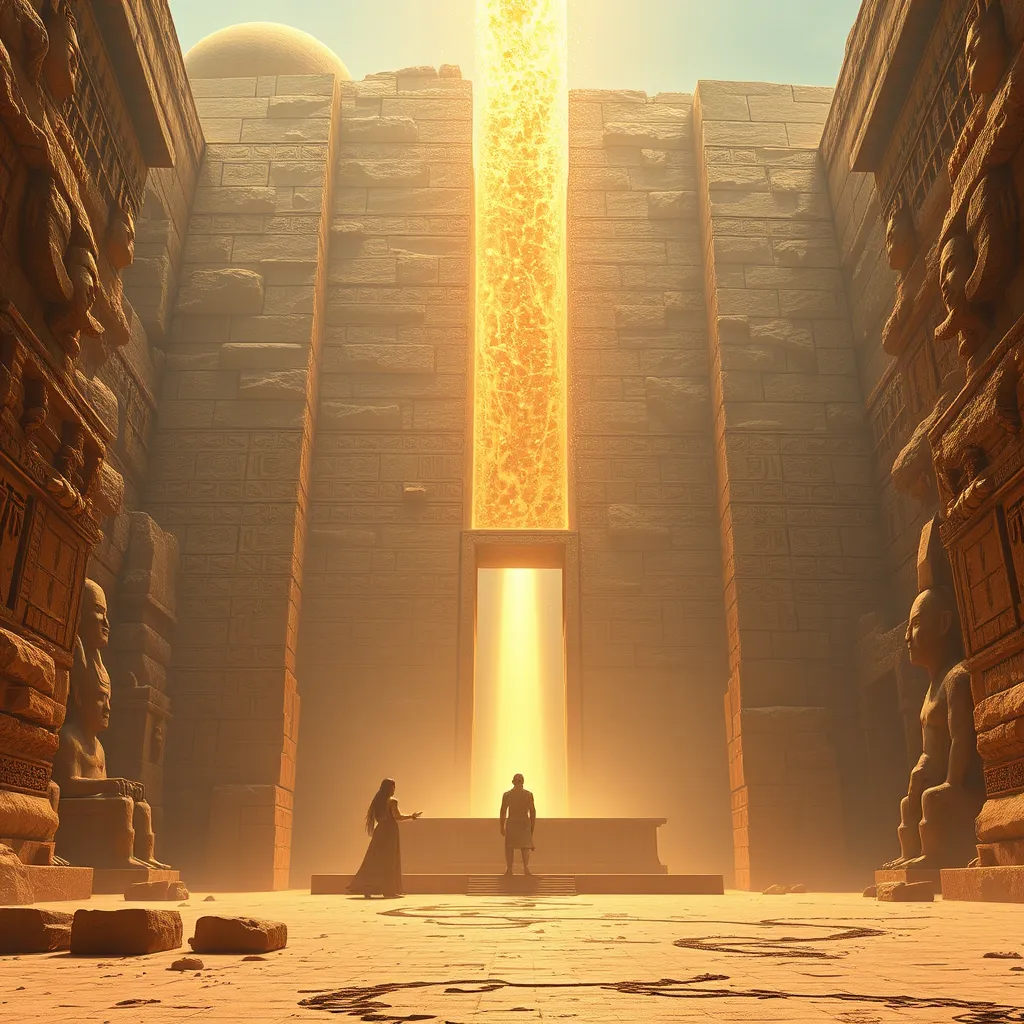The Duat: A Journey to the Heart of Eternity
I. Introduction to the Duat
The Duat, in ancient Egyptian mythology, is a complex and rich concept that represents the realm of the dead. It is not merely a place but a journey that souls undertake after death, deeply intertwined with the beliefs and practices surrounding the afterlife in ancient Egyptian culture. The Duat serves as a significant framework for understanding the Egyptians’ views on life, death, and eternity.
II. The Mythological Landscape of the Duat
The geography and structure of the Duat are vividly detailed in various ancient texts and tomb paintings. It is often depicted as a dark, enigmatic realm filled with challenges and trials that the deceased must navigate.
- Rivers: The Duat features perilous rivers, including the River of Fire and the River of Water, which symbolize the trials that the soul must face.
- Fields of Reeds: These lush fields represent a paradise for the righteous, a place of peace and abundance awaiting those who successfully navigate the Duat.
- The Underworld: Often envisioned as a vast expanse filled with different regions, the underworld houses numerous deities and spirits that play roles in the afterlife journey.
III. Deities of the Duat
Central to the Duat are several key deities, each with distinct roles and responsibilities in the afterlife process.
- Osiris: As the ruler of the Duat, Osiris embodies resurrection and eternal life. He judges the souls of the deceased and determines their fate.
- Anubis: The god of mummification and the protector of graves, Anubis guides souls through the Duat and oversees the weighing of the heart.
- Thoth: The god of wisdom and writing, Thoth records the results of the weighing ceremony and aids in the judgment process.
- Ma’at: The goddess of truth and justice, Ma’at represents the order of the universe and is essential in the weighing of the heart against her feather.
IV. The Journey through the Duat
The journey through the Duat begins with the process of death, where the soul departs the physical body. This transition is fraught with challenges and encounters.
- Departure of the Soul: Upon death, the soul, or “ba,” leaves the body to begin its journey through the Duat.
- Trials and Tribulations: Souls face various obstacles, including hostile creatures and treacherous landscapes, testing their worthiness and courage.
- Weighing of the Heart: A pivotal ceremony where the heart of the deceased is weighed against the feather of Ma’at. A balanced scale signifies a life of virtue, allowing the soul to proceed to eternal life.
V. The Concept of Eternal Life
The Duat is intrinsically linked to ancient Egyptians’ belief in the afterlife and the possibility of immortality. This belief system shaped their cultural practices and rituals.
- Afterlife Beliefs: The Duat embodies the ancient Egyptians’ understanding of life after death, where the soul continues its existence.
- Path to Immortality: Successful navigation of the Duat and the judgment by Osiris leads to rebirth in the Field of Reeds, a symbol of eternal life.
- Rituals and Practices: Funerary practices, such as mummification, were designed to prepare the deceased for the journey through the Duat, ensuring a safe passage.
VI. Symbolism and Art in the Duat
The Duat is richly represented in ancient Egyptian art and hieroglyphs, reflecting its importance in their spiritual beliefs.
- Depictions in Art: Tomb paintings and reliefs often illustrate the journey through the Duat, showcasing the various trials and the presence of deities.
- Symbolism: Elements such as the feather of Ma’at symbolize truth and justice, while the heart represents the soul’s moral integrity.
- Funerary Practices: Artifacts found in tombs, like the Book of the Dead, were intended to guide and protect the deceased in the Duat.
VII. The Duat in Modern Context
The concept of the Duat has transcended ancient Egyptian culture, influencing contemporary literature, art, and scholarly research.
- Contemporary Literature: The Duat has inspired modern authors and filmmakers, often depicted as a mystical realm in fantasy genres.
- Legacy of Beliefs: Scholars continue to explore the Duat’s significance, providing insights into ancient Egyptian thought and the human condition.
- Modern Interpretations: New research sheds light on the complexities of the Duat, revealing its multifunctional aspects in the lives of the ancient Egyptians.
VIII. Conclusion: The Enduring Legacy of the Duat
The Duat remains a captivating aspect of ancient Egyptian mythology, symbolizing the complex relationship between life and death. Its significance extends beyond the past, influencing modern interpretations and understandings of the afterlife.
As we reflect on the human quest for meaning and understanding in life and death, the Duat serves as a reminder of the journey we all undertake in search of eternity. The ancient Egyptians crafted a rich tapestry of beliefs that continue to resonate, emphasizing the importance of virtue, justice, and the enduring hope for immortality.





